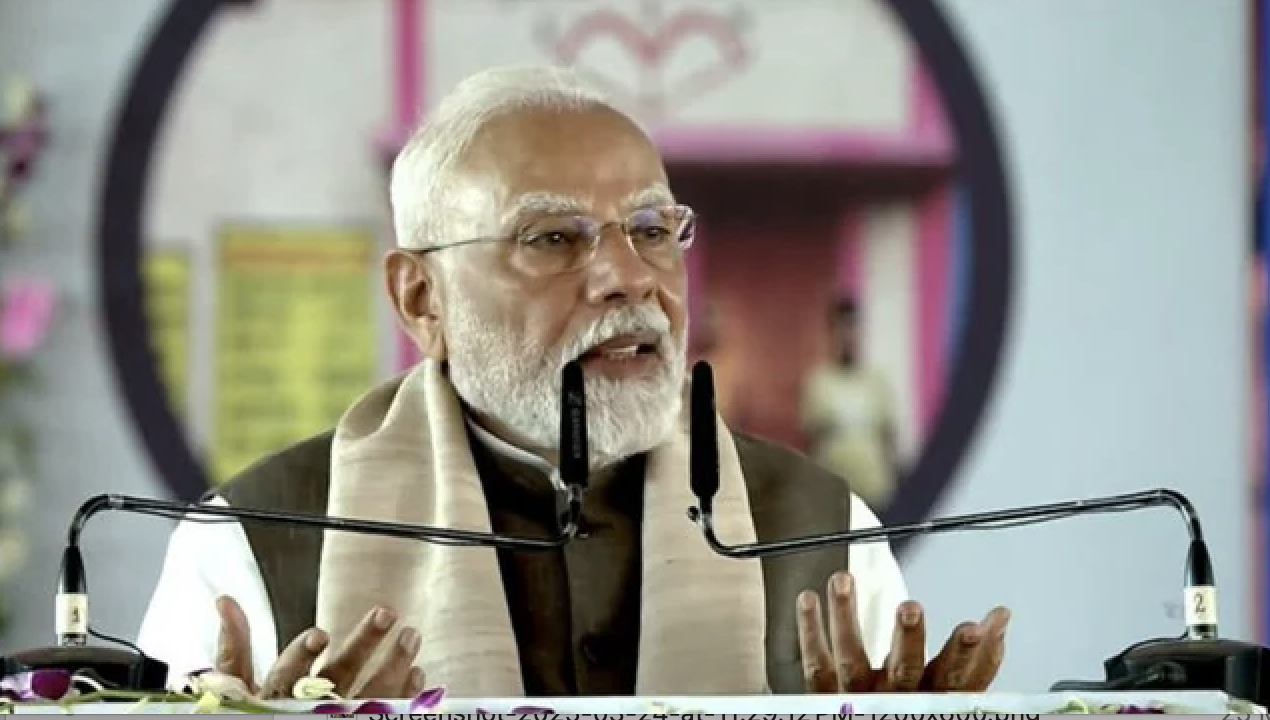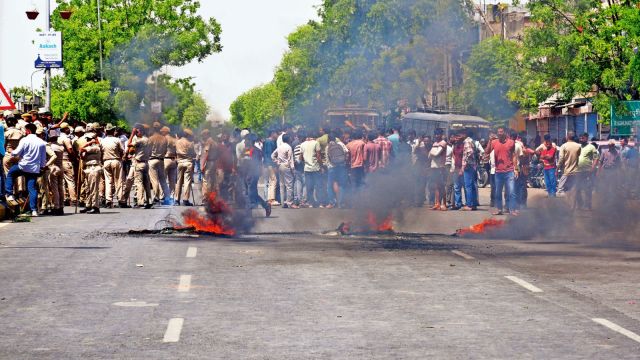
By Siddhant Thakur / The Siasat Daily
Even before the Haridwar Dharam Sansad took place in December 2021, Hindutva leader Yati Narsinghanand was keen on inspiring Hindus to attack Muslims. A music video starring the rabble-rouser shows him encouraging Hindus to pick up arms and wage a war against the Muslims of the country.
The song is composed by the popular Rajput-Hindu pop singer Upendra Rana, who considers Yati to be his mentor.
The song, ‘Narsinghanand Jagave’ currently has over 1.5 Lakh views on Youtube. The tune of the song while catchy, is accompanied by lyrics encouraging violence and hate. The song starts with the words, “Desh Dharam ke liye Yati Narsinghanand Jagave (Yati Narsinghanand wakes Hindus up for the country and religion)” and further down the line, the song states, “Dharm ke khaatir aage badh ke, ab hathiyaar uthao (For the sake of your faith, come forward and pick up your weapons).”
The music video was filmed at Dasna Devi Temple in Ghaziabad in UP, where Yati Narsinghanand serves as the head priest. Yati can be seen seated in the background; clapping and enjoying as Upendra Rana, the singer lavishes praise on him for being the protector of Hindu Dharma.
Rana’s other songs are about the valiant history of the warrior caste Rajput, which features the likes of Thakurs like UP chief minister Yogi Adityanath, and also calls to arms for those who have forgotten their heritage”. Rana’s music is a testimony to the glorification of the caste system and the day-to-day vilification of Indian-Muslims.
Rana, as seen in his videos, is a simple looking and modestly dressed man who is very famous in the Thakur and Rajput belt of Uttar Pradesh. He is considered to be the pioneer of sorts of the genre ”DJ Rajput song”, which is a subgenre of the popular Hindu pop.
These music videos usually feature people brandishing swords and guns, ready to carry out violence. It also showcases bike and car stunt performances with men showing off their well-built torsos. Aside from the hyper-masculine imagery of these videos, what is also worthy of a closer analysis is the assertion of caste dominance.
What do we know about Upendra Rana?
In a report by The Print, Rana said that this popularity he has today comes “after years of struggle’. He says when he was fourteen years old he was influenced by the local folk genre singers – Ragini. They apparently used to perform in his village and he started taking lessons in music from them. At the age of 21. he got married and dropped out of college to make a career in music.
In 2007, he recorded his first music cassette with a local label and a decade later he tied up with a music company that had a YouTube channel. This move changed Rana’s life. His songs were widely shared and by 2019, he decided to branch out with his own channel called ‘Upendra Rana’.
The first song he uploaded didn’t do well. The feedback he got from the young Thakur community was that no one listens to folk music anymore and he was asked to add a modern groove to his music, which included DJ beats and auto-tuned beats.
Thus, Hindutva pop, in all its glory and nastiness, was born.
This was a game-changer for the singer, His next song ‘Thakur Kaum Badi Mardani’ (The Thakur community is very manly) was a big hit and garnered more than 50 Lakh views. He continued to use this formula and it worked well for him. It was followed by one song after another, like ‘Hum Thakur Superstar’ that broke all his previous records with 220 lakh views.
How did Hindu Pop trickle down to the mainstream
Hindu Pop is a genre of music that talks about what a Hindu should be, what they should do, how Hindus should claim back the country from Muslims etc with a twist of funky auto-tuned and DJ beats. It is essentially, Islamophobia made groovy.
In the last fifteen years, the genre has become quite popular and has become a tool of instigating violence and hatred against various communities.
Some of the earliest Hindu pop songs which still remain popular even today are “Agar Chua mandir to tujko teri aukat bata denge (If you touch the temple, we will show you your place)”, a song talks about inciting violence against Muslims if they question or touch ‘the temple’.
Another popular song, which says “Tel lagao Dabur, Nam mita do babar ka (Apply Dabur oil and destroy the name of Babur)’, is again a song that openly instigates violence and hatred against the Muslims.
These youtube channels have a huge subscriber base and the songs have crores of views together. The music videos often discuss popular political questions like the Babri masjid demolition and stone-pelting videos of Kashmir.
Sandeep Acarhya (not to be confused with the Indian Idol singer), who hails from Ayodhya considers himself to be the pioneer of Hindu pop. In a report done by The Quint, he claimed that he was the one who started these songs and made them popular.
He makes songs on similar lines, wherein calls for the rule of a Hindu Rashtra’and open calls against hatred and violence against Muslims. Some of his popular songs are “Makke Me Jal Chadunga Sawan Ke Mahine Me (Will offer water at the Mecca in the month of spring)” and “Bharat main jitne desh Drohi hain unki Maa ka B** ( Fuck the mothers of those who betray India)”
It should be noted that these singers do not have any cases or FIR’s against them despite the words in the songs violating several sections of Indian Penal Code (IPC) like IPC 153A – Promoting hatred between religious groups, IPC 295A – insulting religion or religious beliefs, IPC 505(2) – promoting enmity on the grounds of religion.
The genre and songs continue to grow today because of the constant release of songs on any given current issue. For example, a song was released recently on Mayur Music, a popular Hindu pop youtube channel. It features “Hijab Hijab Kyun Karti Ho Jab rehti ho Hindustan main (why do you insist on the the Hijab when you stay in India)” and also several songs that were released on this channel and other channels in celebration of Yogi Adiyanath’s victory in the recently concluded UP assembly election.
Hindutva pop is here to stay, at least for a while. And that is a cause of deep anxiety.
This article first appeared on siasat.com






